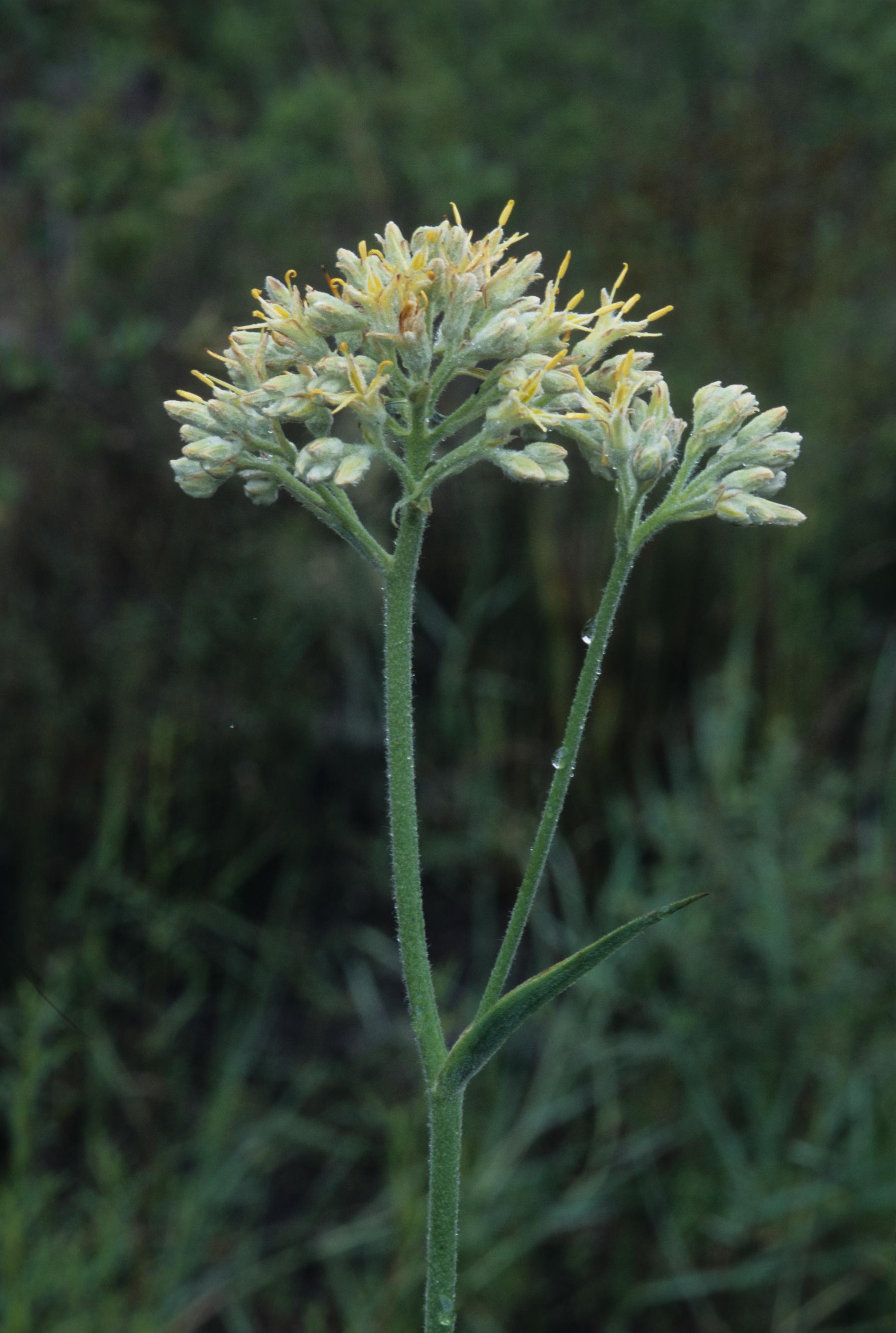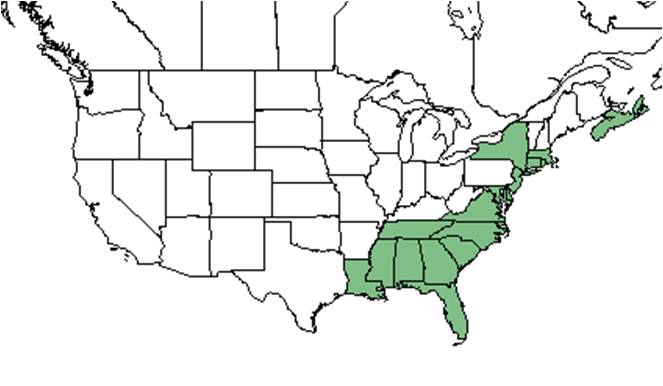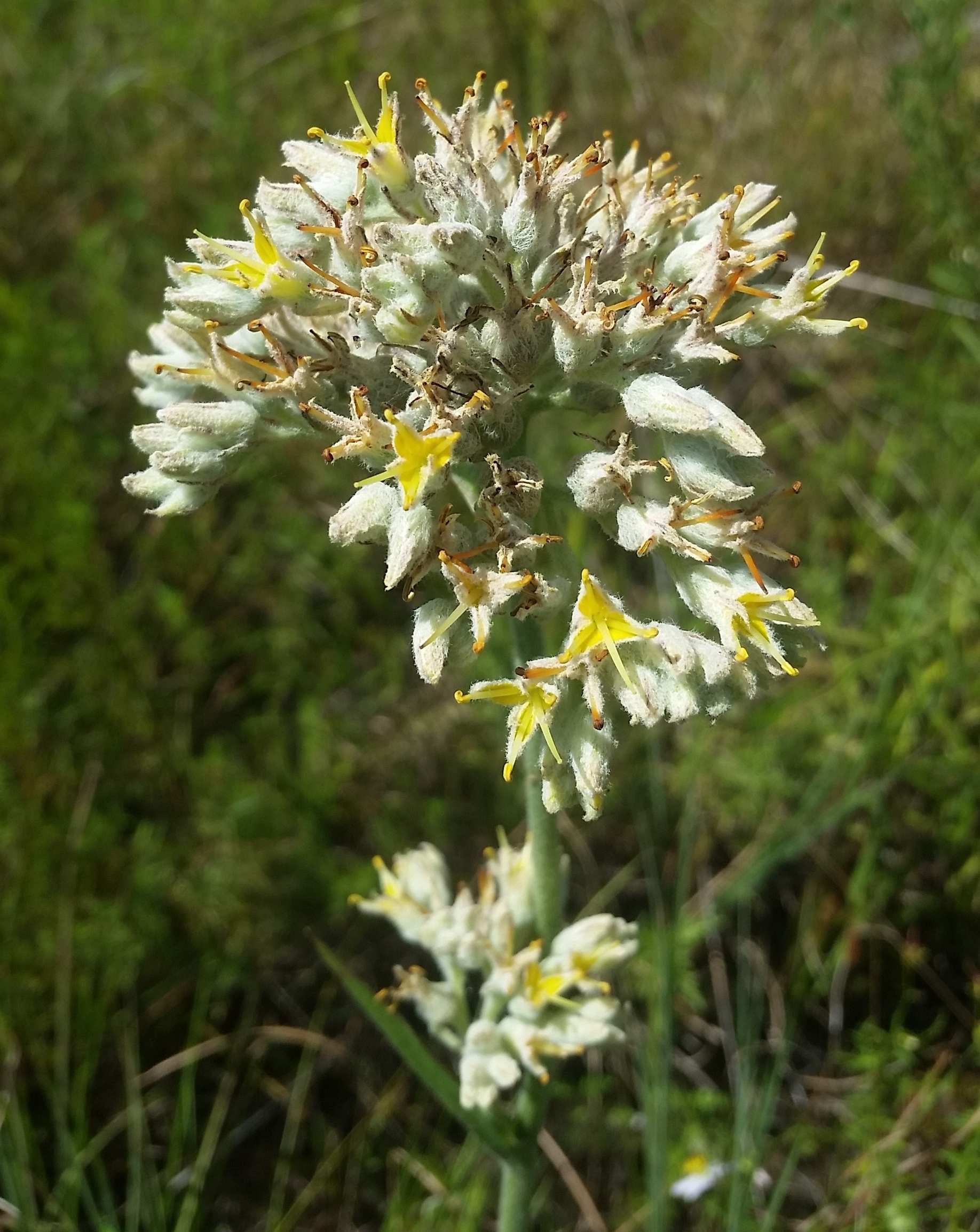Difference between revisions of "Lachnanthes caroliniana"
KatieMccoy (talk | contribs) (→Seed dispersal) |
KatieMccoy (talk | contribs) (→Seed bank and germination) |
||
| Line 40: | Line 40: | ||
===Seed bank and germination=== | ===Seed bank and germination=== | ||
| + | In the southern part of its range, it is capable of producing a substantial seed bank <ref name="sararegistry"/>. In an ex situ germination experiment in the marsh banks of southern Georgia, it was found that seedling germination was significantly increased by adding nitrogen plus phosphorus to a moist environment (Gerritsen and Greening 1989). | ||
| + | |||
===Fire ecology=== <!--Fire tolerance, fire dependence, adaptive fire responses--> | ===Fire ecology=== <!--Fire tolerance, fire dependence, adaptive fire responses--> | ||
It has been observed growing in a pond pine/titi peat swamp that was burned by a lightning set wildfire four months previously (FSU Herbarium). | It has been observed growing in a pond pine/titi peat swamp that was burned by a lightning set wildfire four months previously (FSU Herbarium). | ||
Revision as of 14:40, 11 January 2016
| Lachnanthes caroliniana | |
|---|---|

| |
| Photo taken by Gil Nelson | |
| Scientific classification | |
| Kingdom: | Plantae |
| Division: | Magnoliophyta - Flowering plants |
| Class: | Liliopsida – Monocotyledons |
| Order: | Liliales |
| Family: | Haemodoraceae |
| Genus: | Lachnanthes |
| Species: | L. caroliniana |
| Binomial name | |
| Lachnanthes caroliniana (Lam.) Dandy | |

| |
| Natural range of Lachnanthes caroliniana from USDA NRCS Plants Database. | |
Common name: Carolina redroot
Contents
Taxonomic notes
Description
L. caroliniana is a perennial monocot with slender rhizomes and notable red roots. The flower stalk can reach up to three feet tall and has gray hairs along the top [1].
Distribution
It can be found in coastal environments from Louisiana to Florida and north to Novia Scotia, and can also be foundin Cuba [2].
Ecology
Habitat
Habitats are typically wet, acidic, nutrient poor areas such as mesic and wet flatwoods, wet prairies, and seasonally inundated shorelines [3]. It can commonly be found in disturbed areas such as trails, ditches, fire lanes, and has been observed by Jean Huffman to form dense stands following hog-rooting.
It can become a serious weed in cranberry bogs and newly established pastures [4][5].
Phenology
The white flowers are perfect and actinomorphic with a homoclamydeous imbricate perianth, 3 basifixed stamens, and an inferior, globose, slightly 3-lobed ovary (Simpson 1988) and arranged in a corymb[4]. The seed is a reddish 3 lobed capsule[3]. It can divide by rhizomes, tubers, corms and bulbs [6].
Seed dispersal
Seeds are dispersed locally by gravity [3].
Seed bank and germination
In the southern part of its range, it is capable of producing a substantial seed bank [3]. In an ex situ germination experiment in the marsh banks of southern Georgia, it was found that seedling germination was significantly increased by adding nitrogen plus phosphorus to a moist environment (Gerritsen and Greening 1989).
Fire ecology
It has been observed growing in a pond pine/titi peat swamp that was burned by a lightning set wildfire four months previously (FSU Herbarium).
Pollination
The following Hymenoptera families and species were observed visiting flowers of Lachnanthes caroliniana at Archbold Biological Station (Deyrup 2015):
Apidae: Apis mellifera, Bombus impatiens, B. pennsylvanicus, Mellisodes communis
Halictidae: Agapostemon splendens, Augochloropsis metallica, A. sumptuosa, Lasioglossum coreopsis, L. nelumbonis
Megachilidae: Anthidiellum perplexum, Anthidium maculifrons, Coelioxys mexicana, C. octodentata, C. sayi, Megachile albitarsis, M. brevis pseudobrevis, M. georgica, M. mendica, M. petulans, M. texana
Sphecidae: Philanthus ventilabris
Vespidae: Polistes bellicosus, P. fuscatus
Use by animals
Diseases and parasites
Conservation and Management
Cultivation and restoration
Photo Gallery
References and notes
Deyrup, M.A. and N.D. 2015. Database of observations of Hymenoptera visitations to flowers of plants on Archbold Biological Station, Florida, USA.
- ↑ [[1]]Florida Department of Environmental Protection Accessed: January 9, 2016
- ↑ [[2]]Accessed January 9, 2016
- ↑ 3.0 3.1 3.2 3.3 [[3]]COSEWIC Accessed: January 9, 2016
- ↑ 4.0 4.1 [[4]]Go Botany Accessed: January 10, 2016
- ↑ [[5]]University of Florida IFAS Extension Accessed: January 9, 2016
- ↑ [[6]] Dave's Garden. Accessed: January 10, 2016
